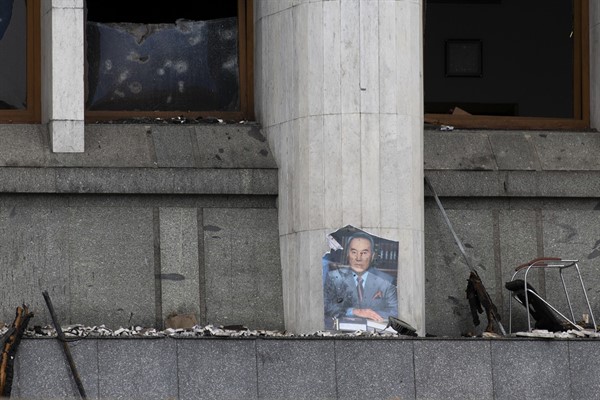The unprecedented violence that rocked Almaty—Kazakhstan’s largest city—and several smaller regional urban centers last week were shocking to longtime observers of the country. Though the initial protests began as spontaneous demonstrations against a planned hike in fuel prices, they were quickly overtaken by violence against state offices and security forces that was apparently instigated by provocateurs.
Though much about the developments in the country remains uncertain due to an information blackout and the opacity of the inner workings of the regime, the events of the past week suggest that an elite power struggle has grafted itself onto the protests, pitting the old guard of longtime former President Nursultan Nazarbayev against supporters of his hand-picked successor, Kassym-Jomart Tokayev, who replaced him in a managed transition in 2019.
Kazakhstan traditionally has been one of the most stable states in Central Asia, due to a combination of years of Nazarbayev’s authoritarian rule and prosperity driven by the country’s oil wealth. Nazarbayev certainly consolidated power and wealth for himself, his family and his allies during three decades in power. But he also steered the country through difficult times, ensuring its sovereignty against the encroachments of its powerful neighbors, Russia and China, and building a functional multi-ethnic state that eventually rose to the ranks of an upper middle-income country, according to the World Bank. Early fears that an independent Kazakhstan, like several of its neighbors, would collapse into ethnic discord following the dissolution of the Soviet Union never materialized.

